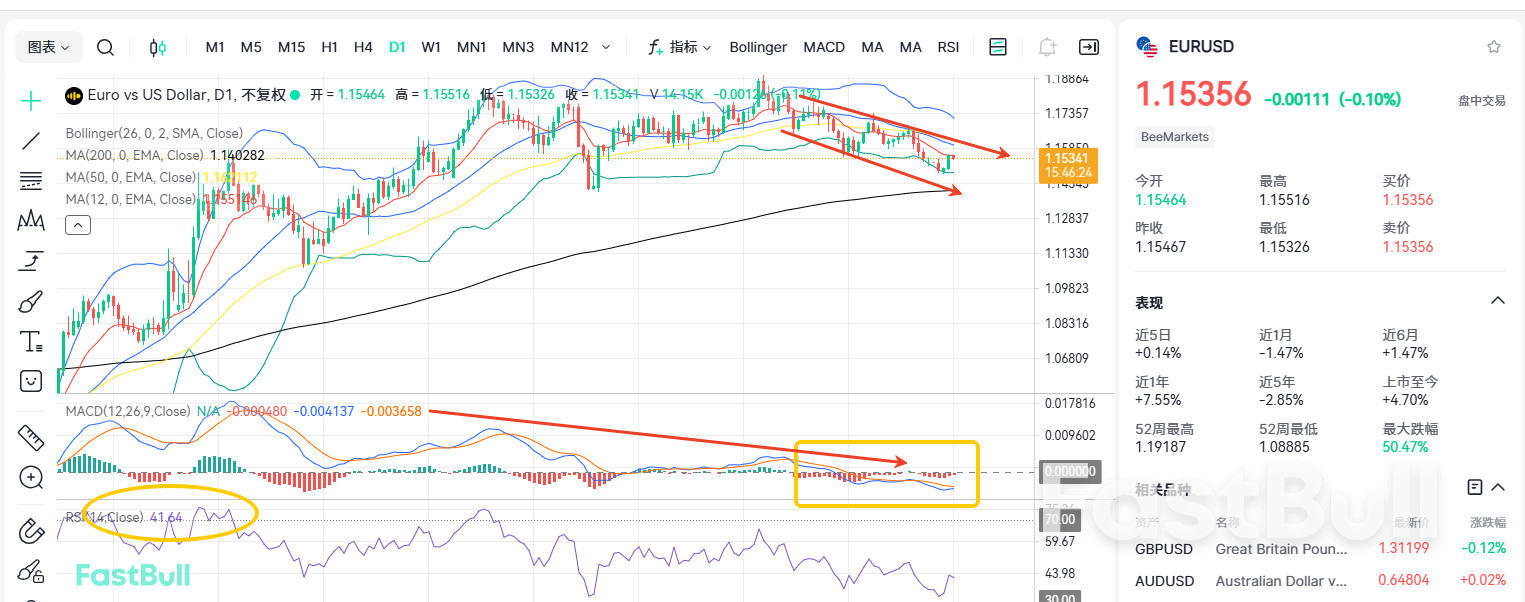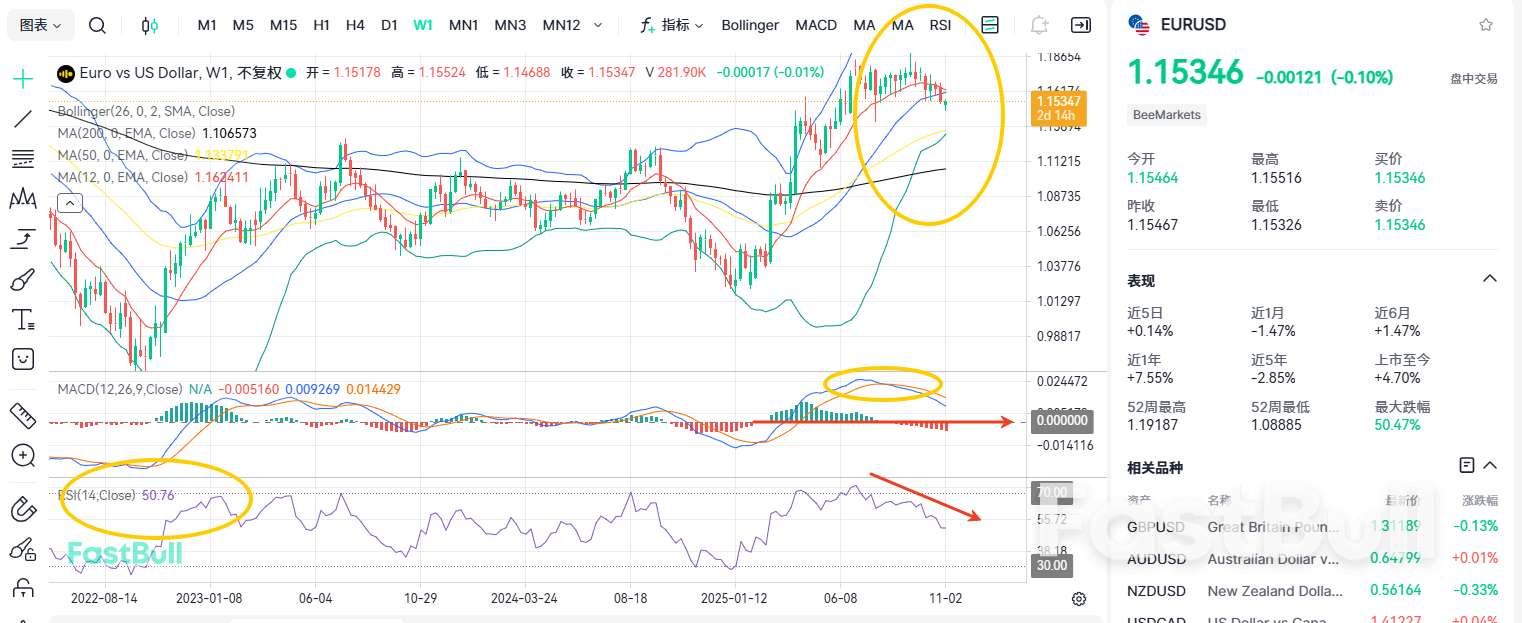Fundamentals
Euro-area retail sales unexpectedly fell 0.1% MoM in September, marking a second consecutive monthly decline and badly missing the +0.2 % consensus. The YoY rate stayed anchored at just 1.0%, underscoring the shallow foundations of the consumer recovery. This spending weakness stands in stark contrast to the recent uptick in sentiment.
The October flash consumer-confidence index rose to its highest level since February. Yet survey evidence shows households still regard the current environment as an inopportune moment for big-ticket outlays, a cautious stance that is likely to persist into year-end.
Major economies are now diverging sharply: Germany and Spain posted MoM gains in September retail sales, whereas France and Italy recorded pronounced declines that dragged on the euro-area aggregate. Capital Economics notes that falling interest rates and a modest revival in consumer credit are creating a more supportive backdrop for real disposable income. Still, slowing employment growth and households' continued reluctance to undertake big-ticket purchases will cap the extent of any rebound. The consensus among economists is for euro-zone retail sales to register only a mild uptrend over the next twelve months, with a vigorous recovery unlikely.
Meanwhile, German industrial output rose far less than expected in September, underscoring that the sector's momentum remains fragile. Production increased by 1.3% MoM, well short of the 3% gain forecast by the market, while the August print was revised down to –3.7%. In YoY terms, total industrial output fell 1.6%, following a downwardly-revised 3.6% drop in August. Although motor-vehicle output rebounded strongly (+12.3% MoM) and provided the main growth impulse, the broader industrial upturn is still lacklustre.
Renewed worries over the U.S. labor market are putting the dollar under selling pressure. The Challenger Report released Thursday showed U.S. employers announced 153,074 job cuts in October, a 183% jump from September and 175% higher than a year earlier. The report attributed the surge in layoffs largely to the growing adoption of artificial intelligence and companies' cost-cutting drives. Signs of cooling labor demand slightly dented market expectations, prompting investors to price in a higher probability that the Fed will leave rates unchanged at its final policy meeting of the year in December.
According to the CME FedWatch Tool, the probability that the Fed will leave the federal-funds target range unchanged at 3.50%–3.75% at the December FOMC meeting has fallen to 33%, down from 38% on Wednesday.
This week, four Fed officials delivered four distinct messages, triggering intense market attention. The most closely watched remarks came from Governor Lisa Cook, who spoke publicly for the first time since former President Trump launched an effort to remove her. Cook said that "risks to both sides of the dual mandate have moved up," adding that a rate reduction at the December meeting is "possible" but "not a foregone conclusion."
Separately, Fed Governor Stephen Miran, Chicago Fed President Austan Goolsbee, and San Francisco Fed President Mary C. Daly also articulated their respective views.
Governor Cook's cautious tone—emphasizing a step-by-step approach rather than committing to easing—was interpreted by analysts as the clearest window into Chair Jerome Powell's current thinking. This underscores the FOMC's reluctance to pre-commit in an environment of heightened economic and political uncertainty.
Cook's cautious stance is not unrelated to her experience during the Trump impeachment saga. As a key member of the Fed Board, Governor Cook must reconcile political pressures with an objective reading of the data. Her remarks thus reflect both her personal views and the broader policy trajectory of the FOMC. By emphasizing risk management and a gradualist approach, Cook signals that any future monetary-policy adjustments will be deliberately measured and predicated on incoming evidence.
Technical Analysis
On the daily chart, after EURUSD's MACD formed a bearish crossover, both lines have slipped below zero, confirming a shift into negative territory. Bollinger Bands are widening downward, with the moving-average stack fanning lower. The price is grinding lower along the EMA12. RSI at 41 reflects deteriorating sentiment. While a counter-trend bounce is underway, the pair remains inside its descending channel; unless the upper channel boundary is broken, the next leg is likely to target the EMA200 around 1.14.
Stepping back to the weekly timeframe, Bollinger Bands are pinching inward, and the EMA12 has rolled over. Following the MACD bearish crossover, the fast and slow lines are still pulling back toward the zero mid-line, leaving downside room. RSI at 50 with successively lower highs signals broad-based caution. Immediate resistance sits at the Bollinger mid-band and the EMA12 near 1.16.
In summary, traders are recommended to take long positions at lows.
Trading Recommendations
Trading Direction: Sell
Entry Price: 1.1533
Target Price: 1.12
Stop Loss: 1.175
Support: 1.145/1.14/1.12
Resistance: 1.182/1.192/1.2














